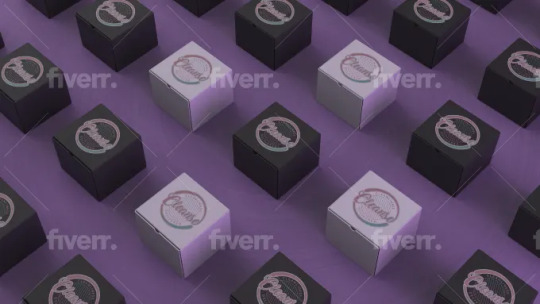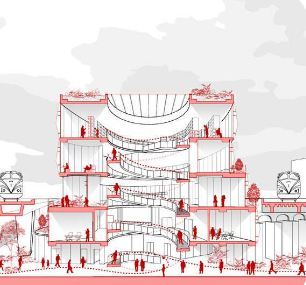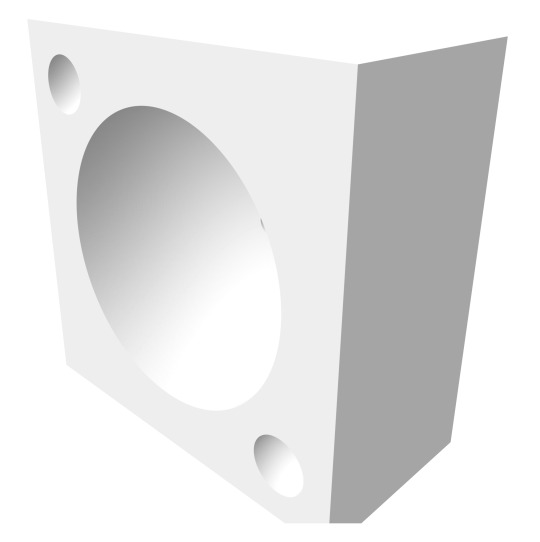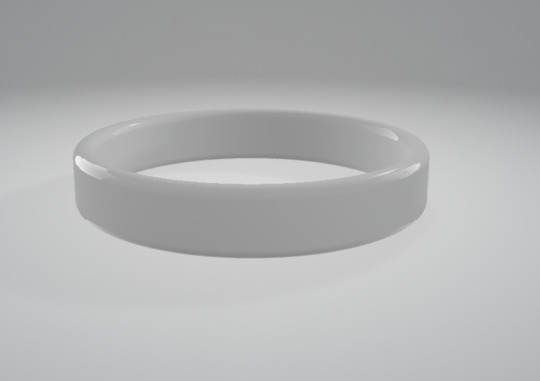#rhino 3d tutorials
Explore tagged Tumblr posts
Text
youtube
How To Make Pear Diamond Shape Jewelry Prong Head For Earing In Rhino 3D Tutorial.
How To Make Pear Diamond Shape Jewelry Prong Head For Earing In Rhino 3D Tutorial. Join Live Chat For Any Questions Want To Know About Techniques Or Tutorials. https://jewelry3dartist.locals.com/post/5009046/how-to-make-pear-diamond-shape-jewelry-prong-head-for-earing-in-rhino-3d-tutorial Be a Member of my Community For Exclusive Jewelry 3D CAD Modeling tutorial techniques To Learn And Get experience from My Jewelry Field Journey From 1991 until now. Benefits From My Locals Community Video Tutorials With Private Or Public Live Chat With Me For Ask Any Question Or Techniques, Same Time Share Your Works, Your Ideas, Your Experiences In Our Community. https://jewelry3dartist.locals.com Join Patreon for exclusive new jewelry designs per month, You can be a member and receive each month new creative designs in all file formats, for 3d print industrial use you will get STL file format, and for editing or for media use you will get 3DM Main Default file format. https://www.patreon.com/jewelry3dstudio Join Discord Community Jewelry 3D Tutorials https://discord.gg/VWf7uvfsPb Join Discord Community Jewelry 3D Models https://discord.gg/mKqU8mVQQH Join the Telegram Channel For New Topics https://t.me/jewelry3dstudio Website https://jewelry3dstudio.com https://jewelry3dshop.com
#jewelry tutorials#jewelry 3d tutorials#jewelry modeling#jewelry 3d modeling#jewelry cad tutorial#jewelry course#jewelry 3d course#jewelry training#jewelry 3d online course#online course#online tutorials#jewelry design making#jewelry students#jewelryteachers#rhino 3d#rhino 3d modeling#rhino 3d tutorials#rhino 3d software for modeling#jewelry maker#goldsmith#jewelry diamond settings#jewelry handmade#diamonds#3d print tutorials#3d print course#3d cad#3d#Youtube
0 notes
Text
youtube
In this Grasshopper exercise for beginners, you'll learn about many components and techniques that will help create many forms besides the one in the video. At the end of this tutorial, I will leave you with 2 small exercises that you can do on your own, basically minor adjustments to this exercise.
#mcneel grasshopper#grasshopper3d#grasshopper#grasshopper tutorials#parametric3d#parametric modeling#parametric design#grasshopper modeling#learn grasshopper#rhino grasshopper#mcneel rhino#rhino 3d#parametric tutorials#grasshopper tips and tricks#Youtube
2 notes
·
View notes
Text
An introduction to Revit and Rhino 3D software
Architectural work tends to include complex drawings and a variety of supporting documentation. If done manually, the task would require a lot of time, energy and resources. Hence, to improve their efficiency and learn new skills, most architects today pursue Advanced Revit Documentation Course and use cutting-edge software. Such a program teaches architects to master advanced 3D modelling techniques in Revit. It provides architects with the skills and knowledge needed to take their design to a whole new level, while unlocking new opportunities and increasing their earning potential. The robust BIM capabilities of Revit not only enable architects to develop detailed 3D models but even facilitate data-rich designs. It also allows for better decision-making throughout the project life cycle.
Many architects also opt to pursue Grasshopper 3D tutorial Online, in order to learn how to link Grasshopper to Revit and model structural beams and construction planes, so as to create components that are able to adapt.
For architects desiring more creative freedom than the pre-defined commands and standardized elements can provide, opting to pursue a Rhino 3D Architecture Course would be a good idea. Rhino can be considered to be a “pure” 3D modeler. It tends to be largely focused on delivering the tools required to design geometric shapes. In Rhino 3D, there is no notion of architectural elements like stairs, floor buildups, or roof tiling. Rather, everything is based on three simple geometry types: curves, surfaces, volumes. However, Rhino 3D does come with a wide range of tools and features, like parametric modeling, free form geometries, as well as complex shape capabilities. Apart from architecture, this software is also used in the fields of engineering, fashion design, and product development.
Online tutorial programs for Revit and Rhino 3D can significantly help architects stuck on a project. They can also be of use to architecture students wanting to complete a complex assignment.
0 notes
Text
3d product renderings and mockups

It seems like you're looking for information or assistance with 3D product renderings and mockups. Creating 3D product renderings and mockups is a crucial step in the design and marketing process for various industries. Here's some information to help you get started:
1. Software for 3D Rendering:
Blender: A powerful and free open-source 3D creation suite.
Autodesk Maya: Widely used in the film and video game industry.
Cinema 4D: Known for its intuitive interface and powerful capabilities.
KeyShot: A standalone 3D rendering and animation application.
2. Creating 3D Models:
CAD Software (Computer-Aided Design): Use software like AutoCAD, SolidWorks, or Rhino to create accurate 3D models.
Sculpting Software: Tools like ZBrush or Blender's sculpting features are great for organic shapes.
3. Texturing and Materials:
Apply realistic textures and materials to your 3D model using UV mapping techniques.
Software like Substance Painter or Quixel Mixer can help create detailed and realistic materials.
4. Lighting:
Proper lighting is crucial for realistic renders. Experiment with different light setups to achieve the desired look.
Consider using High Dynamic Range Imaging (HDRI) for realistic environmental lighting.
5. Rendering:
Choose the appropriate rendering engine for your needs (Cycles in Blender, Arnold, V-Ray, etc.).
Adjust rendering settings such as resolution, quality, and output format.
6. Mockup Tools:
Adobe Dimension: Allows you to create realistic 3D mockups and product visualizations.
Placeit: An online platform that lets you create mockups with your designs on various products.
Mockup World: Offers a variety of free and premium mockups for different products.
7. Tutorials and Learning Resources:
Online platforms like Udemy, Coursera, and YouTube offer tutorials on 3D modeling, rendering, and mockup creation.
Join forums and communities like Blender Artists or Polycount for support and feedback.
8. Considerations for Product Mockups:
Understand the target audience and purpose of the mockup.
Pay attention to lighting, shadows, and reflections to make the mockup realistic.
Test the mockup on different backgrounds to ensure versatility.
9. Outsourcing:
If creating 3D models and renders is outside your expertise, consider outsourcing to professional 3D artists or agencies.
Remember to practice and experiment with different techniques to refine your skills. The field of 3D rendering is vast, and continuous learning is key to staying updated with the latest trends and technologies.




#shirts#shirt design#artist shirts#tees#tshirts#toby's beans#coffee cat#sundew farms#sunflower fox#sugarbritches#apple orchard#vintage logos#logo design#shop#merch#countrycore#farmcore#cottagecore#fashion#my art#horror#slashers#graphic design#the conjuring#the conjuring 3#the conjuring: the devil made me do it#scream#scream 1996#a nightmare on elm street#anoes
2 notes
·
View notes
Text
What's the best 3D modelling software between SketchUp and Rhinoceros?
The choice between SketchUp and Rhinoceros (Rhino) depends on your specific needs, the type of 3D modeling tasks you'll be , and your familiarity with each software. Both SketchUp and Rhino are powerful 3D modeling tools, but they have different strengths and applications. Here's a comparison to help you decide:
SketchUp:
Ease of Use: SketchUp is known for its user-friendly interface, making it accessible for beginners and those new to 3D use a push-pull method for creating 3D shapes, which is intuitive.
Workflow: SketchUp is particularly well-suited for architectural and interior design is widely used for quick conceptual modeling and sketching.
Community and Resources: SketchUp has a large and active user community. There are numerous tutorials and plugins available, making it easy to find help and resources.
Integration: SketchUp integrates well with other software, and its 3D Warehouse allows users to share and download models.
Cost: SketchUp offers a free version (SketchUp Free) with limited features. The Pro version, which has more advanced features, is available with a subscription.
Rhinoceros (Rhino):
Versatility: Rhino is known for its versatility and is used in a wide range of industries, including industrial design, automotive design, jewelry design, and architecture.it is not limited to specific design disciplines and is capable of handling complex geometric shapes.
Precision and Accuracy: Rhino is highly regarded for its precision and accuracy, making it suitable for projects that require detailed and intricate modeling.
NURBS Modeling: Rhino uses NURBS (Non-Uniform Rational B-Splines) modeling, which is well-suited for creating smooth and curved surfaces. This is especially valuable in product and industrial design.
Plug-ins and Grasshopper: Rhino has a robust set of plugins that extend its capabilities. Grasshopper, a visual scripting language plugin, allows for parametric and algorithmic design.
Learning Curve: Rhino has a steeper learning curve compared to SketchUp, especially for users new to 3D modeling. However, it offers powerful tools for those willing to invest time in learning.
Conclusion:
If you prioritize ease of use, quick conceptual modeling, and architectural design, SketchUp may be the better choice.
If you need versatility, precision, and are working on projects that involve complex geometry, Rhino may be more suitable.
Ultimately, the "best" software depends on your specific requirements and the type of projects you undertake. Many professionals use both SketchUp and Rhino in their workflows, choosing the tool that best fits the task at hand.
If you want more about learning SketchUp through videos, click here
If you want more about learning SketchUp through videos, click here
If you want more about learning SketchUp through videos, click here
#decor#drawing#bedroom#bathroom#animation#furniture#home decor#home & lifestyle#sketchup#architectural design#house design#arquitetura#architectural#modern architecture
4 notes
·
View notes
Text
If you are at all familiar with 3d modeling and are struggling to learn blender forget about that dumbass donut totorial.
Go to youtube rn and look up "how to model a bottle in blender, 3d modeling tutorial for beginners"
It has all the most basic key commands that you need and doesnt cover any of the studd you probably already know from other softwares like rhino or solidworks.
No bullshit just straight up guy modeling a bottle no bs.
Gods peed soldiers 🫡🫡🫡
1 note
·
View note
Text



Day 35
Got the results of the first 3D modeling assignment back, and it was underwhelming.
I was pretty bummed the whole morning, but now I am better. At least now I know how to improve. Plus my grade for this assignment was way worse last semester, so I know that I improved.
I also managed to finish the first iteration for assignment 2, so that’s a win!
Full speed ahead I guess 💪
=========================================
List of items for today:
- catch up on house work
- watch 5 tutorial for Rhino-Grasshopper
- review 5 paper for research proposal
- research prototyping methods
=========================================
I call this picture “Tear stain on a bus window.” It’s interesting to see the traces of rain on a sunny day.

1 note
·
View note
Text
How Rhino Has Been Revolutionizing Jewelry 3D Printing

How Rhino is Changing Jewelry 3D Printing
Jewelry 3D printing has undergone a massive transformation in the past decade, and Rhino is at the forefront of this revolution. This powerful software is enabling jewelers to push the boundaries of creativity, efficiency, and precision. Whether you’re a small business or a large jewelry manufacturer, Rhino offers unparalleled features that make designing and printing jewelry easier and more advanced than ever before.
Understanding Rhino 3D Printing
Key Features of Rhino for Jewelry Design
Rhino 3D, also known as Rhinoceros, is a computer-aided design (CAD) software that allows jewelers to create highly detailed 3D models for printing. Some of its standout features include:
Parametric modeling for precise adjustments
Boolean operations for intricate detailing
Advanced rendering for realistic previews
Seamless integration with other jewelry design tools
Why Rhino is Preferred by Jewelry Designers
Many jewelry designers choose Rhino due to its:
User-friendly interface
Wide compatibility with different 3D printers
Cost-effective solutions for both beginners and professionals
Advantages of Using Rhino for Jewelry Design
Precision and Accuracy
Rhino provides jewelers with unmatched precision, ensuring that every detail is captured before the design is sent for 3D printing.
Enhanced Customization Capabilities
With Rhino, jewelers can offer customers fully customized designs, from unique engravings to intricate settings that fit any gemstone shape.
Time and Cost Efficiency
Compared to traditional jewelry-making methods, Rhino significantly reduces production time and costs by eliminating multiple trial-and-error processes.
Comparing Rhino with Other 3D Jewelry Printing Software

Rhino’s Role in Custom Jewelry Manufacturing
Personalized Jewelry Design Trends
The demand for unique, custom-made jewelry is growing, and Rhino provides the perfect platform to cater to this market trend.
Integrating Rhino with Other Tools
Jewelry designers can integrate Rhino with tools like Grasshopper, T-Splines, and KeyShot for a seamless workflow.
Step-by-Step Guide to Creating Jewelry Designs in Rhino
Sketch the initial design
Use Rhino’s modeling tools to create the base shape
Apply intricate details using Boolean operations
Render the model for a realistic preview
Convert the model into a 3D-printable format
Send to a 3D printer for final production
Case Studies of Jewelers Using Rhino Successfully
Small Businesses Leveraging Rhino
Independent jewelers have been using Rhino to create affordable, custom pieces with great precision.
Large-Scale Jewelry Manufacturers
Big brands integrate Rhino into their production lines to enhance efficiency and reduce material waste.
Common Challenges and Solutions in Rhino Jewelry Printing

Future of Rhino in Jewelry 3D Printing
Innovations and AI Integration
AI-powered tools are being integrated with Rhino, making jewelry design even more precise and automated.
Sustainability and Eco-Friendly Printing
New eco-friendly resins and recyclable materials are being introduced for a greener jewelry industry.
FAQs
1. Is Rhino difficult to learn for beginners?
While it has a learning curve, Rhino offers tutorials and community support to help beginners master it.
2. Can I use Rhino for fine jewelry designs?
Yes! Rhino’s advanced modeling tools are perfect for intricate fine jewelry pieces.
3. What file formats does Rhino support for 3D printing?
Rhino supports formats like STL, OBJ, and 3DM, which are compatible with most 3D printers.
4. Does Rhino work on Mac?
Yes, Rhino is available for both Windows and Mac users.
5. Can I use Rhino with a resin 3D printer?
Absolutely! Rhino works well with resin printers, making it ideal for high-detail jewelry designs.
6. How does Rhino compare to other jewelry CAD software?
Rhino offers a balance of affordability, functionality, and ease of use, making it a top choice among jewelry designers.
Final Thoughts on Rhino’s Impact
Rhino has transformed jewelry 3D printing, offering designers an efficient, cost-effective, and precise tool for crafting stunning pieces. Whether you’re a novice jeweler or an experienced designer, Rhino provides the flexibility and features needed to bring your creative visions to life.
0 notes
Text

How To Model in Rhino 3D Palazzetto Dello Sport - Pier Luigi Nervi - EASY 1 Hr Modelling Tutorial
In this video we cover how to model in Rhino Palazzetto Dello Sport (Small Sport Palace) by Pier Luigi Nervi completed in 1957 in Rome, Italy. Pier Luigi Nervi was a master of modularity and dynamic aggregation, basically an analog form of parametric design.
We cover a brief history of the design and construction of the arena, and then we go into detail about how to model the arena Rhino 3D. We cover plans, elevations, and details. We use commands like Array Polar, Divided, Booleans, Extrude, Offset Surfaces, Lofting, Edge Surface and many other Rhino Commands great for Beginners.
#nervi#pierluiginervi#palazzettodellosport#rhino8#architectureportfolio#architecture#architecturediagrams#diagrams#architecturedrawing#rhino3d#3d#archtutorial#adobeillustrator#vectorart#rendering#infographic#graphicdesign#parametric#parametricarchitecture#structure#architectureplan#architecturecompetition#axon#axonometric#architecturesection#perspectivesection#perspective
0 notes
Text
Digital Skills Portfolio
by u3273950 Ashka Rajkotwala
Being a designer, I also wanted to learn new skills and get updates with trends and new software – Through this portfolio I have tried to learn new forms of design including interior designing, graphic design, website design and much more. While making this portfolio, I have gained some knowledge of new software, tools and how I can incorporate these skills in professional practice. It was a wonderful opportunity to break boundaries and learn new software while improving and developing my skills.
5d planner
As I want to stay updated with current trends and skills of the design industry particularly in my field of interior designing. I choose to learn new Ai based software which is partly free and quicker to use.
updated with the ongoing digital development and market trend in the industry of interior designer- initially I want set target to develop my skills for planner 5d - that I can sever my client with initial look of the space within a day so they can get rough idea about it, as 3D renders takes more time. I tried to learn basic use of tools through YouTube tutorials and then explore the software in my own way. I learned basic use of software through
“Create Your Dream Home Now @Planner5d.” Planner5d.com, planner5d.com/interior-design-courses.Online Interior Design School: Interior Design Classes Online (planner5d.com)
“Learn How to Use Planner 5d for Interior Design - Search Videos.” Bing.com, 2024, www.bing.com/videos/riverview/relatedvideo?q=learn+how+to+use+planner+5d+for+interior+design&&view=riverview&mmscn=mtsc&mid=BFF68585BA5E5F13C71CBFF68585BA5E5F13C71C&&aps=0&FORM=VMSOVR. Accessed 27 Sept. 2024.



2. Rhino
I wanted to learn more about this software to get better render outcome, through this software i was able receive superior quality pictures after render but it consumes lot of time to get render thus, this software can be used once the design of the space is finalized and it is just a final digital presentation, minor changes can be done. I tried to gained knowledge about this software through-
“Learn How to Use Rhino for Furniture Designing - Search Videos.” Bing.com, 2024, www.bing.com/videos/riverview/ relatedvideo?q=learn+how+to+ use+Rhino+for+furniture+desig ning&&view=riverview&mmscn= mtsc&mid=CCF401E5530DF13 F1798CCF401E5530DF13F179 8&&aps=27&FORM=VMSOVR. Accessed 27 Sept. 2024. Bing Videos
“Learn How to Use Rhino for Furniture Designing - Search Videos.” Bing.com, 2024, www.bing.com/videos/riverview/ relatedvideo?&q=learn+how+to +use+Rhino+for+furniture+desi gning&&mid=E8FF2499EAD98 9137D14E8FF2499EAD989137 D14&&FORM=VRDGAR. Accessed 27 Sept. 2024. Bing Videos



3. Figma
Figma is one of the best software for UI/UX design, so while developing my skills for using this software I tried to design an application in the last semester and while exploring more about this software, I took opportunity to design website again for my upcoming small business of nail salon. I learn to use this software with the help of YouTube tutorials-
Figma for beginners (4 parts) – Figma Learn - Help Center
“Learn How to Use Advance Figma - Search Videos.” Bing.com, 2024, www.bing.com/videos/riverview/relatedvideo?&q=learn+how+to+use+++advance+figma+&&mid=1DB775DB7A71CFDED2051DB775DB7A71CFDED205&&FORM=VRDGAR. Accessed 27 Sept. 2024.
Bing Videos
“Learn How to Use Advance Figma - Search Videos.” Bing.com, 2024, www.bing.com/videos/riverview/relatedvideo?&q=learn+how+to+use+++advance+figma+&&mid=1DB775DB7A71CFDED2051DB775DB7A71CFDED205&&FORM=VRDGAR. Accessed 27 Sept. 2024.
Bing Videos



4. Adobe Illustrator
As it comes to learning and exploring more about graphic design, I choose to learn and explore my skills through Adobe illustrator. I tried to learn about the basic tools of the software while exploring them for my own upcoming small business. I tried to create a logo for my nail salon. I learn about basic skills of the software through-
“Learn How to Use Adobe Illustrator for Vector Graphics and Illustration - Search Videos.” Bing.com, 2024, www.bing.com/videos/riverview/relatedvideo?q=learn+how+to+use+adobe+illustrator+for++Vector+graphics+and+illustration&qpvt=learn+how+to+use+adobe+illustrator+for++Vector+graphics+and+illustration&view=riverview&mmscn=mtsc&mid=DDE375C93017DEEDC6BCDDE375C93017DEEDC6BC&&aps=60&FORM=VMSOVR. Accessed 27 Sept. 2024.
How to Create Vectors in Adobe Illustrator: 12 Steps (wikihow.com)
“Please Visit Wiki How Directly.” Wikihow.com, 2024, www.wikihow.com/Create-Vectors-in-Adobe-Illustrator#:~:text=There%20are%20many%20ways%20to%20create%20vector%20graphics. Accessed 27 Sept. 2024.
How to Create Vectors in Adobe Illustrator: 12 Steps (wikihow.com)

5. Adobe InDesign
At last, while improving and developing my skill for Adobe InDesign, I tried to create a marketing template again for my upcoming small business of nail salon while exploring through this software, I learned how all the adobe software has their own specialty. I learned about this software through-
Nicholas Gratzl. “InDesign Tutorial Working with Graphics.” YouTube, 4 June 2020, www.youtube.com/watch?v=5r0BmzVyhOE. Accessed 27 Sept. 2024.Acrobat 2024 AGI BonBonBon 15 Try Adobe Acrobat AI Assisant 16x9 (youtube.com)
“Learn How to Use InDesign for Designing Exhibition Catalogs and Marketing Materials - Search Videos.” Bing.com, 2024, www.bing.com/videos/riverview/relatedvideo?&q=learn+how+to+use+indesign+for+Designing+exhibition+catalogs+and+marketing+materials+&&mid=3F871E0C3FFD09C41BF93F871E0C3FFD09C41BF9&&FORM=VRDGAR. Accessed 27 Sept. 2024.
Bing Videos

Reference
“American Society of Interior Designers | ASID.” Www.asid.org, www.asid.org/resources/resources/view/resource-center/339.
McKeough, Tim. “What Does the Future of Design Hold in the next 10 Years?” Architectural Digest, Architectural Digest, 2 Apr. 2019, www.architecturaldigest.com/story/future-interior-design-profession.
Nast, Condé. “The 6 Big Ideas Interior Designers Need to Know in 2023, according to ASID.” Architectural Digest, 8 Feb. 2023, www.architecturaldigest.com/story/the-6-big-ideas-interior-designers-need-to-know in-2023-according-to-asid.
All the image used are taken from Google and Pinterest
1 note
·
View note
Text
Unleashing Creativity with Grasshopper for Rhino: A Guide to Parametric Design
In the world of architectural design and beyond, tools that offer flexibility and power without sacrificing usability are priceless. Grasshopper, a visual programming language integrated with Rhino3D, stands out as a remarkable tool in this domain. This blog post explores how Grasshopper Rhino revolutionizes design processes, allowing architects, engineers, and designers to explore parametric and computational designs with unprecedented ease and precision.
What is Grasshopper for Rhino?
Grasshopper is a visual programming language developed by Robert McNeel & Associates. It runs within the Rhino3D environment and is used for creating generative algorithms. Unlike traditional programming languages that require writing code, Grasshopper provides a canvas where users drag and drop components to construct complex algorithms. These components are connected to form a "script," which is essentially a visual representation of a program.
Key Features of Grasshopper
1. No Prior Programming Knowledge Required
One of Grasshopper's most compelling features is its accessibility. Design professionals who have little to no coding experience can use Grasshopper effectively because it replaces text-based coding with a visual interface.
2. Highly Flexible and Scalable
Grasshopper offers vast scalability, allowing users to start with simple structures and progressively create complex models. It can handle everything from a single residential building to the urban planning of entire cities.
3. Real-time Feedback
As you adjust parameters, Grasshopper provides immediate visual feedback, making it an excellent tool for iterative exploration. This feature allows designers to quickly experiment with variations and see the implications of their adjustments in real-time.
4. Integration with Other Tools
Grasshopper plays well with several other tools and formats, including BIM (Building Information Modelling) software and various engineering tools. This integration is crucial for a seamless design-to-production workflow.
Applications in Design and Beyond
Grasshopper is used in a multitude of fields ranging from architecture and industrial design to jewelry making. Here are some typical applications:
1. Architectural Design
Architects use Grasshopper to create complex architectural forms that would be difficult to model by traditional methods. The ability to tweak parameters and instantly see changes to the form allows for rapid exploration of design alternatives.
2. Fabrication
Grasshopper can also connect to physical construction processes by generating patterns for cutting sheets or 3D printing molds. This capability is particularly useful in custom and high-efficiency manufacturing.
3. Urban Planning
On a larger scale, urban planners employ Grasshopper to simulate pedestrian flows, optimize the placement of buildings, or analyze sunlight exposure across different seasons.
4. Interactive Art
Artists have adopted Grasshopper to create interactive installations that respond to environmental variables or viewer interactions, adding a dynamic layer to their artwork.
Learning Grasshopper
Grasshopper offers a plethora of tutorials, workshops, and online resources for beginners to advanced users. The community forums are incredibly supportive, providing help and sharing advanced scripts and solutions. For those new to Grasshopper, starting with basic tutorials to understand the interface and logic of visual programming is advisable.
Conclusion
Grasshopper for Rhino is more than just a tool; it is a gateway to exploring the vast potential of computational design. Whether you're a seasoned architect looking to push the boundaries of design or a student eager to explore the possibilities of parametric modeling, Grasshopper offers a platform that combines power, flexibility, and creativity. As the field of design continues to evolve, tools like Grasshopper will undoubtedly play a pivotal role in shaping the future of how we create, imagine, and interact with our environment.
0 notes
Text
youtube
In this third part of the Grasshopper series on attractors for beginners, we will learn about another component called Curve Closest Point, another alternative way to have attractor points affecting your shape. I recommend you also watch the first two videos in the series to have a better understanding about the attractors' logic, even though this video, by itself alone, presents a good explanation on its own. In the video description, you can find the links for the other two videos, also a link to download the demo file used in the second part that I used as a starting point for this tutorial.
#rhino grasshopper#grasshopper 3d#grasshopper tutorials#mcneel grasshopper#parametric 3d#parametric tutorials#grasshopper beginners#parametric beginners#parametric modeling#learn grasshopper#mcneel#learn parametric#grasshopper attractors#Youtube
0 notes
Text

Rhino 3D Tutorial
We help Architecture students & professionals create their designs. We offer professional online training in the leading technologies for the built environment. Here's a collection of our favorite Rhino 3D Tutorials. The entire product line of Rhino 3D and Rhino plugins is available at the Rhino Prof store. Visit the Rhino Prof Experts page to hire trainers and consultants.
0 notes
Text

Reflecting on my journey with Tinkercad, a powerful tool for creating 3D prototypes, I am struck by the evolution of my skills and confidence in utilizing this innovative platform. Initially, venturing into the realm of 3D design felt daunting and unfamiliar, as I grappled with the complexities of the software and navigated its myriad features. However, through perseverance and a commitment to self-directed learning, I gradually began to unravel the intricacies of Tinkercad, unlocking its potential to bring my creative visions to life.
The initial challenges I encountered served as valuable learning opportunities, prompting me to delve deeper into tutorials, guides, and online resources to enhance my proficiency with the software. With each passing day, my understanding of Tinkercad grew more nuanced, enabling me to overcome obstacles and execute increasingly complex design concepts with greater precision and finesse.
In contrast to my solo exploration of Tinkercad, I observed my colleague Giovanni utilizing Rhino, another sophisticated 3D modeling tool. While our approaches differed, I recognized the inherent value in diversifying our skill sets and exploring alternative software solutions to broaden our collective capabilities as a team.
Looking ahead, I am eager to further hone my skills in Tinkercad and leverage its capabilities to streamline my design workflow and achieve greater efficiency in prototype development. As evidenced by my successful design of the final card shape using Tinkercad, I am confident in the potential of this tool to catalyze creativity and innovation in my future endeavors.Moreover, I am mindful of the importance of continuous learning and growth, recognizing that proficiency with Tinkercad is not an endpoint but rather an ongoing journey of exploration and discovery. By remaining open to new techniques, methodologies, and best practices, I aspire to cultivate a mastery of Tinkercad that empowers me to manifest my design concepts with precision and ingenuity.In conclusion, my experience with Tinkercad has been transformative, illuminating the possibilities of 3D design and instilling within me a sense of confidence and proficiency in utilizing this powerful tool. As I continue to refine my skills and expand my creative horizons, I am excited to embrace the boundless potential of Tinkercad to realize my design aspirations and make meaningful contributions to the field of prototyping and innovation.
0 notes
Text
Embark on Your Parametric Design Journey with Grasshopper
One such tool that has revolutionized the industry is Grasshopper, a visual programming language integrated with Rhino's 3-D modeling tools. This blog post is dedicated to exploring how Grasshopper can enhance your parametric design journey, especially for those just starting out or considering enrolling in a [grasshopper class].
Understanding Parametric Design
Before delving into Grasshopper, it's essential to understand what parametric design is. Parametric design is a process based on algorithmic thinking that enables the expression of parameters and rules that, together, define, encode, and clarify the relationship between design intent and design response.
Why Choose Grasshopper?
Grasshopper's appeal lies in its intuitive visual interface, which allows designers to create complex forms and geometries without writing a single line of code. By enrolling in a [grasshopper class], you'll learn how to manipulate these visual elements, making the design process more interactive and accessible.
1. Visual Programming – No Coding Required
One of the first lessons in any [grasshopper class] is understanding that you don’t need traditional coding skills. Grasshopper uses a drag-and-drop interface where users connect components—like a visual flowchart—to create and alter their designs. This approach is especially beneficial for visual thinkers who might be intimidated by conventional programming languages.
2. Real-Time Feedback and Flexibility
Grasshopper provides real-time feedback, making it easier to experiment with designs. You can quickly adjust parameters and immediately see the results, which is a significant advantage over traditional modeling methods. This aspect of Grasshopper is often emphasized in [grasshopper classes], as it allows for a more dynamic design process.
3. Integration with Rhino 3D
Grasshopper is seamlessly integrated with Rhino 3D, one of the most powerful modeling tools in the industry. This integration allows designers to build sophisticated models with both software tools, a topic often covered in advanced [grasshopper classes].
Applications of Grasshopper in Design
Grasshopper is not limited to a single design field. Its applications are broad, ranging from architectural design to jewelry making. By joining a [grasshopper class], you can explore various case studies and projects that showcase its versatility.
1. Architectural Modeling
Architects use Grasshopper to create complex forms and structures. The tool allows for exploring parametric designs, which can lead to innovative architectural solutions.
2. Product and Industrial Design
Grasshopper can also be used in product and industrial design. Its ability to quickly iterate designs and modify parameters makes it an invaluable tool for creating consumer products, furniture, and more.
3. Art and Sculpture
Artists and sculptors find Grasshopper useful for creating intricate and complex art pieces. The software provides a new dimension to artistic expression through its algorithmic capabilities.
Learning Resources and [Grasshopper Class] Opportunities
There are numerous resources available for those interested in learning Grasshopper. Online tutorials, forums, and community platforms offer a wealth of information. However, enrolling in a dedicated [grasshopper class] can provide structured learning, expert guidance, and a deeper understanding of the software’s capabilities.
Conclusion
Grasshopper is more than just a tool; it's a gateway to a new realm of design possibilities. Whether you're an architect, designer, artist, or enthusiast, learning Grasshopper can significantly impact your work. By taking a [grasshopper class], you embark on a journey that not only enhances your design skills but also expands your creative horizons. In a world where design and technology constantly evolve, Grasshopper stands out as a beacon for innovation, creativity, and efficiency.
0 notes
Text
Tutorial with Paul Johnson in Rhino to make a sphere, a mould for a sphere and a hoop that I can get 3D printed. The sphere and hoop as formers from which I can make a plaster mould for slip casting.
The mould itself as the start of a 3 step process to create a 'perfect' plaster mould by using the 3d plastic mould, to make a silicon mould and then use the silicon mould to make a plaster mould (and many more). We had to use a special type of plastic which after printing could be put in a 'vaporiser' which will hopefully smooth out the surface, making it almost shiny.
Update: we ran out of the special plastic after printing the mould so I am just going to see how that works out before investing in more plastic for the others.
Also the vaporising chamber can only take object up to 12 x 12 cms which is really restrictive on size, especially for the hoop, but it will still be work doing a test at some point.





0 notes